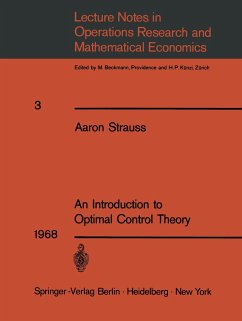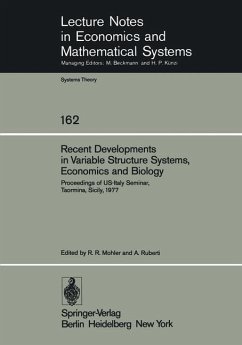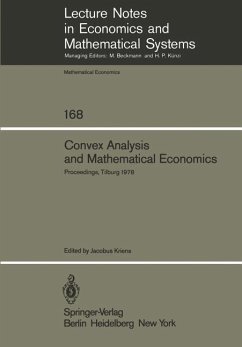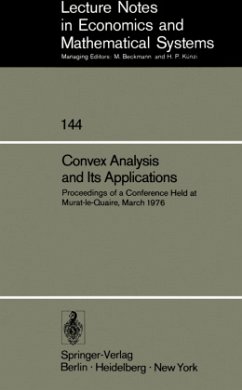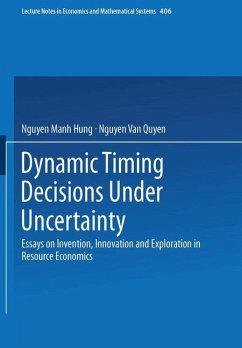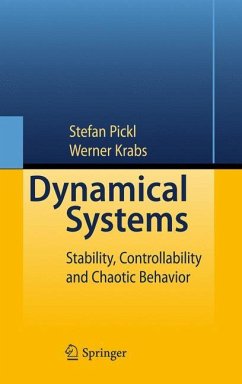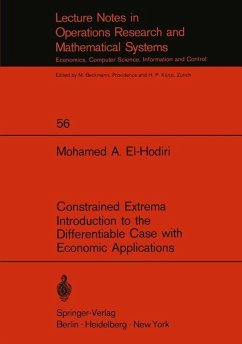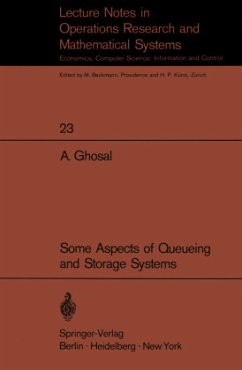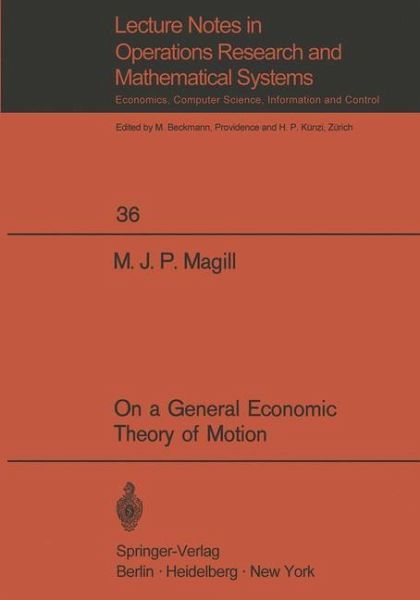
On a General Economic Theory of Motion

PAYBACK Punkte
20 °P sammeln!
I On the Origin of the Ideas.- 1. Origin in mathematical economics and mathematical physics..- 2. Theory of motion in physics: Galileo, Newton, Euler, Lagrange, Hamilton..- 3. Principle of Statics in economics and mechanics..- 4. Idea of central principle of motion for economics..- 5. Present theory differert from that of Samuelson and Hicks..- 6. Ramsey's equations of motion..- 7. Fisher's dynamical theory of valuation..- 8. Duality between allocation and valuation in statics and dynamics..- 9. Relation of present theory to dynamic programming and optimal control theory..- 10. Conclusion.- II...
I On the Origin of the Ideas.- 1. Origin in mathematical economics and mathematical physics..- 2. Theory of motion in physics: Galileo, Newton, Euler, Lagrange, Hamilton..- 3. Principle of Statics in economics and mechanics..- 4. Idea of central principle of motion for economics..- 5. Present theory differert from that of Samuelson and Hicks..- 6. Ramsey's equations of motion..- 7. Fisher's dynamical theory of valuation..- 8. Duality between allocation and valuation in statics and dynamics..- 9. Relation of present theory to dynamic programming and optimal control theory..- 10. Conclusion.- II On the Objective Function of an Economic System.- 11. Importance of general theory of motion..- 12. Influence of uncertainty on motion: first condition..- 13. Concept of economic system..- 14. Objective function and constraints: second condition..- 15. Euler's method eliminates the constraints..- 16. First example, motion of corporation..- 17. Second example, motion of aggregate economy..- III On the Principle of Stationary Present Value.- 18. Basic motive underlying motion is summarised in Axiom of Rational Choice: third condition..- 19. The basic Principle of Motion is the Principle of Stationary Present Value..- 20. Pure Allocation Equations of motion..- 21. Convexity condition..- 22. Example, equations of motion of corporation..- 23. Economic, interpretation..- 24. Example, equations of motion of aggregate economy..- 25. Relation of present theory to analytical mechanics; Principle of Stationary Action, Lagrange's equations of motion.- IV On the Duality of Motion: Allocation and Valuation.- 26. Fisher's dynamical theory of valuation: the Valuation Principle..- 27. The Maximum Principle and the Dual Equations of motion..- 28. Geometric interpretation of dual theory..-29. Example of geometric interpretation..- 30. The Principal Function, the Present Value Function and the fundamental valuation equation..- 31. Example, dual theory for corporation..- 32. Example, dual theory for aggregate economy..- 33. Relation of dual theory to canonical theory of motion in analytical mechanics: the canonical equations, the Action Function, and Hamilton-Jacobi equation..- V On the Possibility of Wave Motion.- 34. Present Value surfaces propagate according to Huygens Principle..- 35. Huygens Principle and duality..- 36. Wave phenomena in optics and mechanics lead to wave optics and quantum mechanics..- 37. Parallel between geometrical optics, classical mechanics and economic theory of motion suggests transition to wave theory of motion: the fundamental relations..- 38. Derivation of wave equation for economic system..- 39. Interpretation of square of wave function as probability function on co-ordinate space: the emergence of uncertainty..- 40. Principle of Stationary Present Value derived from wave theory in small wavelength limit.





